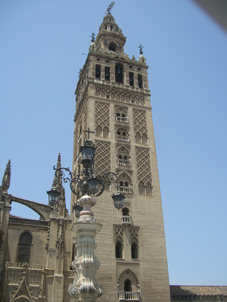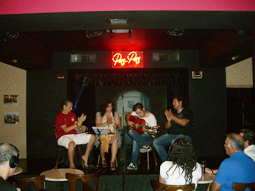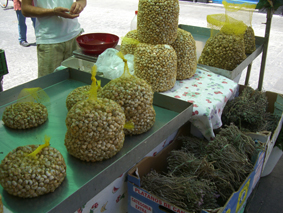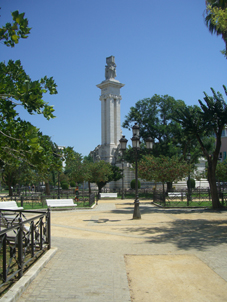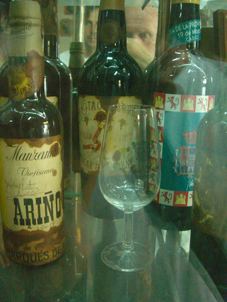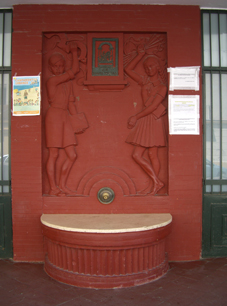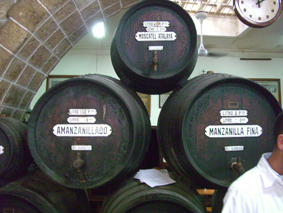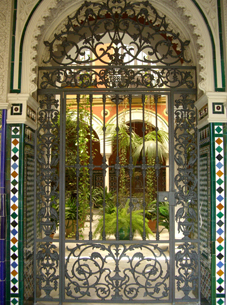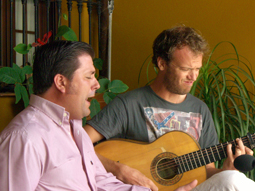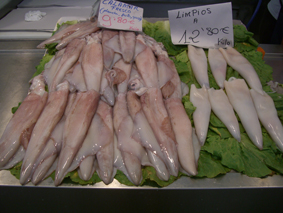El triángulo del flamencoListening to landscapes The audio travelogues by Winter&Winter do not look for the exceptional, but for the soul. We search for the 'being' of cultural landscapes, which have grown over the centuries. In the heritage of the people's music sounds the soul and the 'being' of landscapes is passed on with song and tradition, from generation to generation, in a non-written custom. This music comes anonymously from the people as Goethe says. A tiny recording team from Winter&Winter travels around the world. We wander and roam through foreign countries to experience the characteristic colours of music, to inhale the melodies and to feel the rhythms. We do not search for famous and prominent musicians, we are not looking for a breathtaking experience, but we want to discover the wonderful small sensations. We open our ears, to be able to dive into a foreign culture. People's music is still flowing over the country, it is still possible to listen to a landscape, but the world is shrinking because of fast connections and also because the internet is changing everything. And it can happen that the characteristics of a landscape rapidly fade away. Today it has already become apparent that the non-written custom from generation to generation is dying out. Everything changes constantly. We reach new horizons, values shift, old terms and 'old' values loose their meaning. The audio travelogues from Winter&Winter are like photographs, they capture the crucial moment, and if the records are exceptionally strong then you can hear the soul of a landscape. Already in the 18th century the flamenco triangle is considered as the cradle of flamenco. That alone is a good enough reason for Mariko Takahashi, the graphic artist Guenter Mattei, the flamenco expert Jerónimo Navarrete and me to travel to Sevilla, Jerez and Cádiz in order to detect genuine culture and music full of emotion, sensuality and fierceness. For centuries melodies, chords and rhythms have been passed on from generation to generation. My microphone goes to an adventure in Andalusia and discovers the folk art of flamenco on streets and places, in small bars and private houses. The quote from Erich Kaestner "a saphead visits in foreign countries a museum, a wise person visits the tavernas" is our motto. The real flamenco is often not performed on stages of concert halls. For more then 300 years flamenco pulses in the organism of Andalusia. This music is the voice of Andalusia and the album »El triángulo del flamenco« gives the listener the possibility to experience very closely the people, the landscape and the culture.
Travel scenes After our arrival in Seville we meet in a vacant factory building Raúl Cantizano and Antonio Montiel. Here these two musicians rehearse, compose and improvise together. We want to get to know each other, we want to talk about music, and exchange our ideas. Unexpectedly, Raúl starts tuning his hurdy-gurdy, Antonio sits down on his cajón and takes a couple of percussion instruments. In the beginning is the music. And like a good travel photographer who has always his camera in his hand ready to take a photo, I position my microphone to record. Raúl and Antonio play "Marxa" with a march rhythm of Seville's Semana Santa (Easter Week, with its world famous processions, and Feria de Sevilla, the Flamenco event in the land). Sound cascades of the past float into the present to be continued in the future. Raúl plays his hurdy-gurdy and opens the album »El triángulo del flamenco«.
In the middle of the night we visit a simple farm where a variety of fragrant and delicious home cooked food, beer and wine is being prepared. Various flamenco singers and musicians, friends of the farmer, meet to play music. We eat, drink, laugh together and Carmelo Vides starts playing guitar. Paco Marin and David Carrasco with wonderful powerful, sensitive mature voices and Sebastián Cruz, a young, talented flamenco singer, make music. We will come back to Sebastián Cruz on a later occasion. The men sit outside on a veranda and have in front of them the wide open countryside. The songs tell stories about love, cuckolded men, loss in life and the landscapes. These are not songs about shining winners, "... I do not fear death, because this life is an ordeal and I don't know if I am good enough to succeed." In the twenties "Fandango Flamenco" was established. The origin was the traditional flamenco from the province of Huelva (with lavishly decorated melodies as known from "cante jondo"); this form spread to the rest of Andalusia and Spain. Almost all singers refer to this tradition, each singer presenting the Fandango with own characteristic style and timbre. Because of that the original metrical scheme in 3/4 and in 6/8 gets replaced by a fast free form. A continuation of the so-called Fandangos Naturales (CD I, Track 2), which remind of the Ópera Flamenco and also Niño de Marchena, a flamenco singer, who achieved great success in the Ópera Flamenco period (1922–1956). The Cartagenera (Fandango de Morente, CD I, Track 3) develops from the traditional fandango of the province of Cartagena, and this style became a genre of its own in the 19th century, it can be counted among the Cantes de Levante.
Our friend and expert of the scene, Jerónimo Naverrete, author and photograph of the book "La voz de los flamencos", has invited the guitarist Rafael Rodríguez at the tapas bar and bodega Cádiznueve in Seville. He is one of the most known and most versatile artists of the flamenco scene, he plays with famous musicians like Milagros Mengibar, Alejandro Granados, Belén Maya, Israel Galván, Hiniesta Cortés and many others and brings with his unique style flamenco to a large audience around the world. We sit together in the bar, drink a glass of wine and Rafael starts playing guitar. His music is telling stories from Granada, Málaga and - and this is the astounding part - Cuba and Jerez. The name Zambra (CD I, Track 4) derives from the Abrabian word "zamra" (flute) or "zamara" (musician). It is the name for a flamenco dance of the Roma (Gitanos) of Granada and later in the fifties it is also used for the style of Manolo Caracol's flamenco performances, fulfilled with reminiscences of the exotic, Moorish culture of Sacromonte.
The Malagueña (CD I, Track 5) comes from the traditional fandango around Málaga. Since the 19th century this style is highly popular in Andalusia. In this way the Malagueña is the most fertile original form for new flamenco styles like Rondeña, Taranta, Taranto, Cartagenera and Granaína. Because of the free rhythm the Malagueña is not made for dancers. The Guajira (CD I, Track 6) has a Hispanic-American background, comes from Cuba in the 19th century and is gradually establishing itself as a new flamenco style. In 1960 in a theatre in Jerez the piece "La Guajira" gets probably presented for the first time. In the thirties the famous Pepe Marchena is creating a melismatic and richly ornamented vocal style for the Guajira, this being one of the main reasons why the Guajira is a specially popular form of flamenco. The themes revolve around Cuba and the capital Havana, the girls and the delicious fruits.
The singer Vicente Gelo invites us to a typical barbecue in his house. The guitarist Tino Van Der Sman, a Dutchman in Andalusia, and also Sebastián Cruz, whom we met at the farm for the first time, are with us. Vicente Gelo sings with an impressive presence and voice a Malagueña and Guajiras, we know these styles in other forms from Rafael Rodríguez. And he ends the first CD with Cantiñas, the generic term for a group of flamenco styles (Alegrías, Mirabrás, Romeras und Caracoles) from the area around Cádiz. The character of this song has a special, festive atmosphere and is very typical for Cádiz. The word "cantiñear“ is a synonym for play, improvisation and imagination. In the 19th century Cantiña has its zenith performed by local flamenco ensembles in the dance bars of Cádiz. Vicente Gelo fascinates with his exceptional sensuality, elegance, dynamic, feeling and expression. "A shell (spanish: concha) was my cradle, and I was born by the sea, I only want to marry Concha, and does not want anybody else. Don't cry, don't be sad my love. When you survive this pain, then something else will put you into chains ... and yesterday evening, oh Mama, I was totally alone and I was frightened by a tiny cockroach, which came out of the wall, and I tell you, I will not make other girls heads spinning, I do everything only for you ... constant dripping wears the rock away, but my tears do not soften your heart ... tiriti tran tran tran ..."
Our travel leads to a patio of a tavern late in the evening. Raúl Cantizano and Antonio Montiel, whom we meet at the very beginning, invite us for an intimate and energetic performance. This duo is also the opening act for CD II. And once again the Cuban winds flow over Andalusia. The Femenino (Guajira) has its origin in Cuban music. In the middle of the night – to avoid the hot and try daytime – Raúl and Antonio play music influenced by the cheerful character of the Cubans. There has been a give-and-take among various forms of musical expression. This results in a fantastic mixture of two different cultures and influences, a crucial part in the development of flamenco. Then follows (CD II, Track 2) Un poco más, algo menos (Tientos), a piece full of expression narrating about sweet seduction, love, passion, a story from fine intimateness to aggression. The song (CD II, Track 3) Contracorriente (Bulería) describes the Rio Guadalquivir, the longest river in Andalusia. The name Guadalquivir comes from the Arabic words al-wad d-kabir or Wadi d-Kabir which means 'the great river'. It originates in the Sierra de Segura, in the upper course other small streams feed 'the great river', ships run in between Córdoba and Seville, and it flows into the Gulf of Cádiz near Sanlúcar de Barrameda. Bulería is one of the modern styles of flamenco from the area around Jerez. The name comes probably from the Spanish word "burlar" (to mock or to hoax). The Bulería is known – also as a dance – for the fast tempo and dynamic.
Sunrise in the countryside, sunrise at the sea ... I still dream from the wonderful things, so that I am frightened to wake up. A dream that I am your slave, that I die for you, that I am the prisoner of the love of my life, that I need your kisses to survive. I don't want to wake up ... It is sad to be confronted with the real situation. I only see you in my dreams ... I feel tortured that I am from Andalusia. Go with me to France where the wine is growing to be able to harvest mature grapes. Green like the olive, blue like the sea, black like the night, chestnut brown like the tree. Your eyes are like two daggers. Nobody sees when you are looking at me. And I want to know which colour your eyes are, to be able to die." At the dancing bar Pay Pay we meet Carmen de la Jara, she sings Bulerías (CD II, Track 4) with her group featuring the guitar player Juan José Alba, Diego Montoya and Pedro de la Chana (Palmas, hand clapping). A group of close friends from Cádiz come together to listen to Carmen. The Romeras (CD II, Track 5) are part of the group of Cantiñas, over and over again there have been requests for this music at the dancing bars. The name is said to either stem from Romero El Tito for the adaptation of the romance "El Torrijos" or from the legendary singer La Romera. This fast dance with a lot of ornaments shall apply equally to women and men. Carmen continues with Tangos and Soleá de Cádiz and finishes her set with Tanguillos (CD II, Track 8): "Listening to the shores of little bays ... when the waves dance and the kisses sound under the starry sky ... I am dreaming that we walk through the lanes ... and the church windows look out to the sea ... then Cádiz is a sigh of longing, a call to dance Tanguillos. Look, Cádiz is a Tanguillo, listen to the rhythm ... Cádiz is a sigh of longing, a sigh to dance Tanguillos. Tanguillos is a typical song of the carnival and the carnival is a pure folkloristic event. Since the middle of the 19th century Tanguillo meets flamenco in the variétés theatre and Zarzuelas. Tanguillos are an essential component of the dancing schools. The flow seems to be relatively simple but the Tanguillo works with layers of three different rhythms (6/8, 3/4 and 2/4) and is one of the more complex structures of the flamenco.
We stroll through the night to meet old friends. Sebastián Cruz and Tino Van Der Sman play for themselves and for us the song Cante de Levante. "Levante" describes in the world of flamenco the songs from the east of Andalusia, the area around Almería, Granada, Murcia and Valencia, these are the mining regions of Spain. "Cantes de las Minas" is used as a synonym for about the underground mining. Asensio Sáez about the deep roots and necessity of these songs: "An irresistible necessity, almost substantial, born out of the rebirth of the miners, who escape from the dangers and the risks day by day, to have a happy life outside of the mine shaft..." Our journey ends with a Romance. The historic marks of the Romance lead into the medieval culture of the singers of the romance. The Romances Andaluces are considered as a pre-form of the Romances Flamencos, which are the very origin of flamenco singing today. Sebastián Cruz has an unmistakable powerful voice which wakes deep emotions. Guitarist Tino Van Der Sman is his partner with an excellent technique and wonderful musicality. Sebastián's voice sounds pure and passionate. The final song of this musical travelogue embodies the 'being' of Andalusia. – Stefan Winter
Short biographies in alphabetical order Raúl Cantizano, born 1973 in Seville, is a versatile musician who is specialised in contemporary flamenco. He is interested in the development and new forms of interpretations of flamenco. He works also as a composer for special projects in Seville (Tejidos al Tiempo, Ti-me-ta-ble, Le Gloria de mi mare a.o.). Together with Santiago Barber he creates experimental flamenco programs (Bulos y Tanguerías and Vaconbacon, Cantar las fuerzas).
Sebastián Cruz, born in 1977 in Beas (Huelva), learns flamenco singing within his family. Since he is 12 years old he performs in clubs, parties and festivals. He is a singer with a special taste for classic flamenco. He receives a scholarship of the Cristina Heeren Foundation of Seville and studies with José de la Tomasa, Calixto Sánchez, Paco Taranto and Esperanza Fernández among others. Since 2003 he develops his solo career performing in several productions of dancers and guitar players like Manolo Franco, Eduardo Rebollar, José Luis Postigo, Tino Van Der Sman. All along these years he works as a singer in the most important flamenco clubs of Seville like “Casa de la Memoria”, “Sol Café Cantante” and “Los Gallos”, where he performs with groups and as a soloist.
Vicente Gelo, born 1976, comes from Albaida de Aljarafe (Seville), he learns singing at regulars' tables and flamenco clubs. Naranjito de Triana is one of his main teachers and influences. In 2003 he wins the flamenco competition Sol de Oro in Lorca (Murcia). He loves to sing in connection with flamenco dancers. In this area he performs with wonderful artists like Antonio Gades, Cristina Hoyos, José Antonio, Pepa Montes, Isabel Bayón, Pastora Galván and many others. Currently he is part of the ensemble "Ballet Flamenco de Andalucía" under the direction of Cristina Hoyos, and he is touring succesfully throughout the globe with the program "Viaje al Sur".
Carmen de la Jara, born in Cádiz, starts singing already at school as a child and performs at family reunions. As a young girls she wins important flamenco competitions and performs at peñas and festivals throughout whole Spain. Besides flamenco she also performs compositions like "El amor Brujo" by the classical composer Manuel de Falla. Carmen de la Jara receives various awards for her artistic works and integrity for performances, recordings and TV shows.
Paco Marín loves to sing for the community. He performs often in Beas (Huelva) in bars, at parties and festivals. He wins flamenco competitions and is known far beyond the region because he has developed his own style. Paco Marín has a mature voice full of elegance and velvety timbre which reflects his enormous experience.
Antonio Montiel, born 1972 in Seville, has developed over the years his own percussion style. His music is influenced not only by flamenco but also by jazz and other folk music. With Raúl Cantizano he performs in a duo and composes new works which reflect the world and history of flamenco.
Rafael Rodríguez learns playing guitar with Andrés Vázquez when he is 13 years old. After that his education is self-taught and until today he is active as an independent autodidact. Maybe that is the reason for his nickname "El Cabeza" ("the vanguard"). He is one of the best soloists of the flamenco scene but also his sensitive accompaniment for dancers and singers is well respected and particularly valued.
Tino Van Der Sman is born in 1974 in The Hague (NL). He starts his career at the age of 12 and it’s only after two years of guitar studies, that he travels to Spain to participate in master classes from Paco Peña. He then wholeheartedly discovers flamenco and his increased interest and passion for the flamenco art. Ever since, he has developed himself as a flamenco artist, taking classes with great masters as Gerardo Núñez, Paco Jarana, Manolo Franco or Miguel Ángel Cortés. After graduating at the Rotterdam conservatory in 1999, he leaves for his permanent stay in Seville, where he obtains a scholarship at the Cristina Heeren foundation. It is only one year later he starts teaching at the very same foundation. His professional career develops quickly. Tino participates in Israel and Pastora Galván's company. With various flamenco artists he is touring Spain and the world.
The guitarist Carmelo Vides comes from Punta Umbria, where he also receives his musical education. He plays with amateurs and also famous artists like Arcángel and various dancers. He teaches in Huelva and he is an active power of the flamenco scene in Andalusia. |
© Winter&Winter | Impressum | Datenschutz | Press Login | Back |
